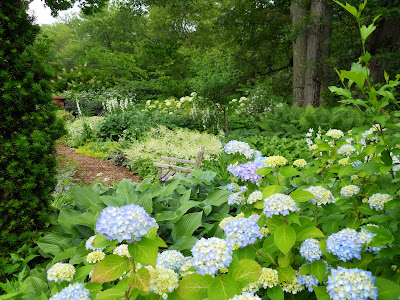
As the new year approaches the gardens here in Seekonk are nestled under a blanket of snow. Just days before the "Blizzard of 2010" my fence contractor installed the three wooden arches that now mark the entrances to the front garden pictured above. The ensuing snow fall has brought all outdoor labor to a standstill. In truth after spending much of November and early December planting bulbs and preparing the beds for winter, I welcome this well deserved respite from garden chores. Things left undone will simply have to wait for a thaw. In a month or so I'm sure I'll find myself impatiently awaiting the first signs of spring. For now, however, I'm content to enjoy the pristine white landscape from the comfort of my couch. Garden catalogues began arriving before christmas and their glossy photographs have already begun to fuel endless fantasies. Fantasies that don't include April temperatures in the 90's, July hail storms, snails or those slimy lily beetle grubs that made mincemeat of my asiatic lilies last year. Perhaps this summer my new arches will provide the perfect support for the large-flowered clematis that I've always coveted,but have yet to grow successfully. Of course if all of my schemes unfolded according to plan, I might come to miss the challenges and inevitable disappointments that are the gardener's lot in life... or perhaps I'd finally achieve that much touted inner peace that thus far has eluded me.
In any case, I wanted to thank you all for your support and encouragement and for taking the time to read my blog. Here's wishing you a wonderful new year filled with beautiful gardens.
May all your fantasies grow into reality.
Andrew
















































